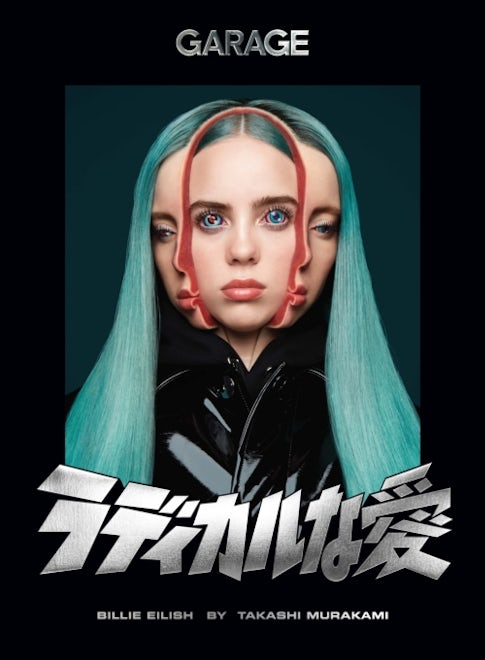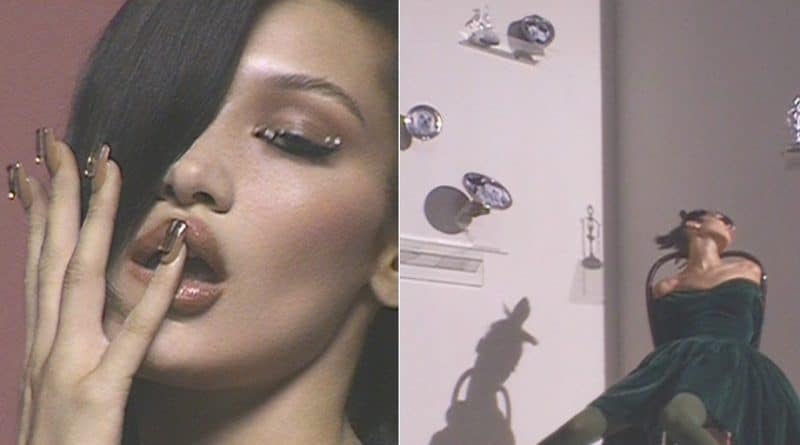How to Break Into Fashion When You Don’t Already Have Money | Intelligence
LONDON, United Kingdom — For in-demand photographer Micaiah Carter, a plum job doesn’t always equal a big paycheck. In fact, they often require him to put up his own money before seeing any sort of compensation. “It can be hard because it costs a lot of money [to work],” said Carter, whose images have been featured on the cover of magazines like GQ, Marie Claire and Fader. “Sometimes magazines can ask you for jobs that cost like $10,000.”
It is the creative jobs in fashion — photographers, stylists, makeup artists, set designers and so forth — that are often the most coveted. But they come with costs attached. There’s the expensive equipment, plus production fees and travel that aren’t always covered by the client. Compounding that, work is often constrained by small budgets and compensated with humble paychecks. The financial cost of making it in fashion’s creative fields is, for many, overwhelming, if not prohibitive.
Then there are the gatekeepers. Fashion is an insular industry that has historically fought over a handful of the same creatives. It also tends to favour those who already have the financial means to support themselves and the social connections required to network. But in operating this way, the industry is hurting itself. Over 90 percent of jobs in the creative industries in 2018 were held by people from advantaged socio-economic backgrounds, according to a British government survey. In the US, 63 percent of people working in the creative industries hold college degrees, almost double the national average.
Yet, a growing number of editors and creative directors are looking to hire from a larger, more diverse talent pool in an effort to improve the end result of their magazines. Moreover, widespread anti-racist protests calling for an end to police brutality have brought conversations around racism and discrimination in the creative industries to the fore. Initiatives like The Kelly Initiative, a pledge that has been signed by the likes of Gabriella Karefa-Johnson and Carlos Nazario, are urging the CFDA to use its status to hold the fashion industry accountable on hiring, commissioning and promoting Black professionals.
The disruption caused by the coronavirus pandemic and subsequent economic downturn, challenging as it is for many freelancers, might also open up opportunities for a new wave of creatives to emerge as hard-hit brands look to hire entry-level talent.
“We’re seeing a very young generation of photographers and stylists who are discovering new ways of entering the industry and who are getting big editorial jobs and big money jobs,” said Isabella Burley, editor-in-chief of Dazed and Confused. “And that’s really exciting to see, this younger generation of creatives who are reimagining the route into fashion.”
To Burley’s point, social media and accessible photo-editing tools have opened up the path to many creative careers because they now have a public platform for their work. It also means there’s more competition than ever before. Considering this rapidly changing — but nonetheless challenging — fashion landscape, what can aspiring artists do to better their chances of breaking into the industry?

Garage 16 cover featuring Billie Eilish by Takashi Murakami | Source: Brian Phillips
Do the Research
“A fundamental step is research and education because it’s difficult to develop a style and a vernacular if you don’t know what’s come before you,” said Garage magazine’s Creative Director Brian Phillips. “When you meet with photographers that are successful, there’s a strong underpinning of visual culture and art. They are constantly looking and educating themselves on what’s happening.”
Learning about pioneers of the past can help artists better understand the industry they are hoping to break into. Furthermore, researching their predecessors’ work can assist aspiring creatives in developing their own distinct aesthetic. When artists meet with commissioning editors, art directors and brands, the ability to talk about the inspiration behind their work while drawing on a range of cultural references can help creatives stand out.
Explore Alternative Hubs
It’s no longer essential that creatives get signed to an agency in order to receive mentorship and secure well-paid jobs in the industry. Social media has opened up alternative opportunities for aspiring talent to connect with brands and editors. For instance, The Girlgaze Network is a platform that connects women and non-binary creatives with companies looking to hire artists.
“Don’t be afraid to go down unusual paths,” said Lindsay Orosz, chief operating officer of Girlgaze. “There are a lot of companies out there that are looking for new ways to discover talent.” Girlgaze’s community is made up of established and emerging creatives from over 50 countries across multiple skillsets.
Red Hook Labs, a New York and Los Angeles-based public benefit corporation, runs community programmes that teach aspiring artists about makeup art, photography, styling and fashion business. It also offers creatives the opportunity to access production supplies, including camera and lighting equipment, which can be borrowed to shoot on location.
Network — Even If You Don’t Have One
“For photographers and stylists, assisting is really important because you build a network just by being on set; you get to know both people on the same level as you and the people above,” said Cathy Butterworth, founder of Saint Luke, an artist management company that develops the careers of both emerging and established talent.
Beyond the technical knowledge that comes with working on fashion productions (many of which are restarting as countries come out of lockdown), assisting gives creatives the opportunity to meet possible collaborators on set. “It’s less of like being at a party and saying, ‘Hi, do you want to shoot with me?’ That could come across as a bit creepy,” Burley said. “[People working on set] also want to be fashion photographers and stylists. It’s important to remember and leverage the fact that you have the same end goal.”
People nowadays just want a quick fix and it’s a bit disheartening.
Then there is the more straightforward approach of simply emailing people with established practices with the hopes of developing useful technical skills. When sending an email, it pays off to explain the motivation behind the proposed collaboration. “It’s about being smart and respectful,” said photographer Sharna Osborne who has shot campaigns for Christopher Kane, Martine Rose and Red Valentino among others. “People nowadays just want a quick fix and it’s a bit disheartening. If anyone reaches out with that kind of tone, I’m immediately put off.”
Get a Team Together
A strong team of collaborators is crucial to any aspiring artist; fashion productions are the result of teams often made up of photographers, stylists, makeup artists, hairstylists, lighting specialists, and more. Even with social distancing measures in place, virtual meetings and shoots with reduced headcount can open up opportunities to develop ideas. “When I started I was testing a lot with models and I was just shooting with my friends,” Carter said. “The people that I work with now, I’ve been working with for the last like five years. And it’s the same type of team. When people are hungry to create stuff, it works well because people can see that desire.”
For those that don’t have immediate friends or family with creative aspirations, social media can be a vital tool that allows artists to more easily connect and communicate about upcoming projects and opportunities. But when reaching out for possible collaborations, avoid generic and generalised statements, advises Sophie Elgort, who co-founded the non-profit organisation Through Our Lens Inc., which offers teenage girls photography education and industry mentorship, with Carolyn Pride: “Maybe reference a specific story or a particular project. Just something that’s personal about their work.”
Adopt a DIY Approach
Technical equipment, designer clothes and elaborate set production costs can add up. One way creatives can keep costs down is by looking to what is immediately accessible. “It’s about having a DIY mentality,” Burley said. “Practice on friends that you could pass off as models or look to your natural community around you. There’s no need to feed into the mindset of, ‘Oh I need a model’ or ‘I need to go through a proper agency.’”
For Sharna Osborne, improvising with what you already have can also play a central role in developing a body of work with a distinct visual language. Sourcing models from nearby communities, working with local talent or even asking people with more established practices to shoot behind the scenes, can “create those spaces to build your portfolio,” Osborne says. “The technical skillsets come from these different experiences.”
There’s no need to feed into the mindset of, ‘Oh I need a model’ or ‘I need to go through a proper agency.’
Personal Work Pays Off
Developing a personal voice is crucial for aspiring artists. When brands and editors commission creatives, they choose the artists because of their way of seeing, and so nurturing a consistent aesthetic can help photographers and stylists differentiate themselves. “As a client, seeing personal work is really great to understand what it is that the artist is trying to achieve,” Saint Luke’s Cathy Butterworth said. This can then lead to unexpected partnerships.
For Brian Phillips, the most important questions to bear in mind are: “What is the personal voice here? What’s this person’s take on their subject matter? And how do they bring their specific eye to the picture?” Phillips said. “All too often you look at fashion photography especially, and it’s very generalised. Anybody can take a picture of somebody wearing a fabulous outfit — that doesn’t make a good fashion picture.”
Personal work is also an opportunity for artists to hone their creative and technical skills without conforming to the restrictions that might be placed on them by editorial and commercial clients. Moreover, learning the skills of post-production means that creatives can then go on to take projects with minimal budgets.
Get Serious About Social
For visual storytellers, Instagram is a great tool to showcase work, but the sheer number of creative accounts can make it hard to stand out. Only posting images that aren’t published elsewhere can lend an Instagram profile exclusivity, rather than recycling photographs that may already have circulated online. It may be basic advice, Burley said, but seeing social platforms as a portfolio is absolutely necessary.
Another way creatives can differentiate themselves, is by showing outtakes and behind the scenes shots. This can give editors and brands a better understanding of the artist they are thinking of commissioning. “The process can be just as beautiful as the result,” Osborne said. “And with all the social media noise, it can be humanising too. That’s really powerful.”
Related Articles:
What Being a Fashion Photographer Really Costs


